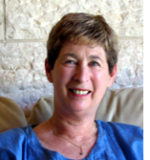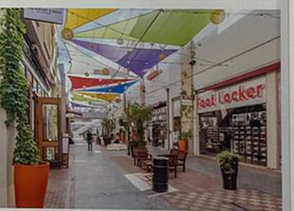By Dorothea Shefer-Vanson


HAIFA, Israel — Tucked away behind a row of buildings on one of Haifa’s main boulevards is the Munio Gitai Weinraub Architecture Museum. Its rather somber space provides a home for changing exhibitions demonstrating different aspects of the built and open areas in which human life takes place.
Erez Raz, who studied Landscape Architecture at the Technion, has assembled some of the projects he has worked on in recent years, presenting them in an exhibition displaying his varied talents and original approach to combining interior and exterior spaces in public life. The projects presented depict his approach to different stages of urban life, ranging from childhood play through adolescence and sport to adult activities such as shopping and driving.
Emphasizing the importance of open spaces and being in touch with nature for human welfare, he shows how he has tackled such projects as designing a new shopping mall, planning a science park, and organizing various other projects in such a way that consideration of the environment and contact with nature is not omitted from the urban landscape.
The large wall posters show these projects as meeting basic human needs, as defined by psychoanalyst Donald Winnicot, who stated that the individual’s mental environment is a kind of ‘half-way house’ between reality and imagination, enabling him or her to connect with their objective surroundings, and that the subjective connection with the natural world facilitates this.
It requires a great deal of imagination, resourcefulness and originality to turn a mundane shopping mall into a place of harmony where a commonplace activity such as shopping becomes a pleasant aesthetic experience and the individual feels uplifted by coming into contact with nature. Erez Raz seems to have achieved this in the recently constructed Village Open Shopping Precinct at an important junction where Givat Olga (near Hadera) abuts one of the main road and rail routes along Israel’s coast line. A dedicated cycle route has been incorporated into the layout of the precinct, and rest areas as well as a special area with activities for children have been incorporated into the design, thus catering for all segments of the family.
Even something as simple as a neighborhood basketball court presents a design challenge, and Erez Raz has managed to incorporate design elements into this seemingly simple task, using materials that blend in with the environment. At the same time he has managed to create a unique space that defines the activity for which it is intended and is also defined by it, bearing in mind the proximity of the site to both the sea and the Carmel mountains.
The motto of the exhibition ‘Leisure and Pleasure’ reflects the underlying philosophy of the designer, namely, the importance of leisure activities for the mental well-being of the individual and society as a whole, and the need to incorporate aspects of the natural world in the urban environment.
For the record: Erez is my nephew, and I think I am justifiably proud of him.
*
Dorothea Shefer-Vanson is an author and freelance writer based in the Jerusalem suburb of Mevasseret Zion, Israel. She may be contacted via dorothea.shefer@sdjewishworld.com